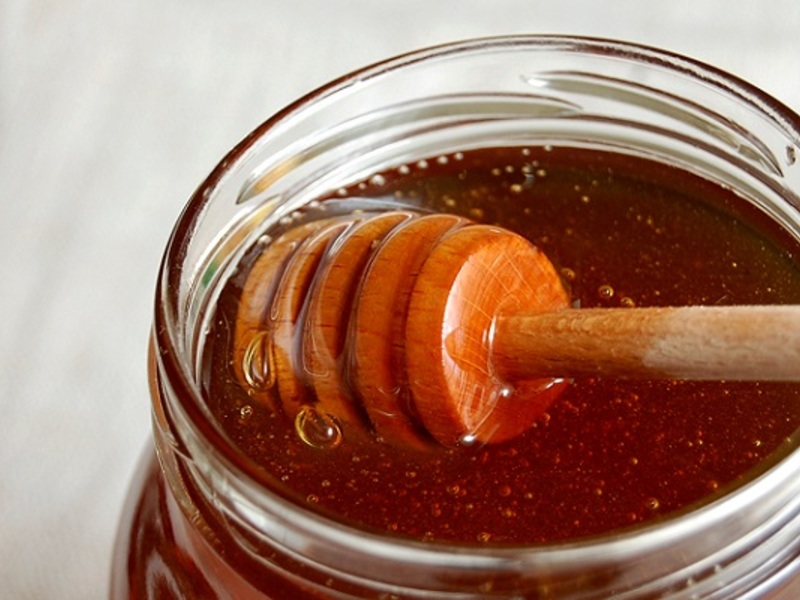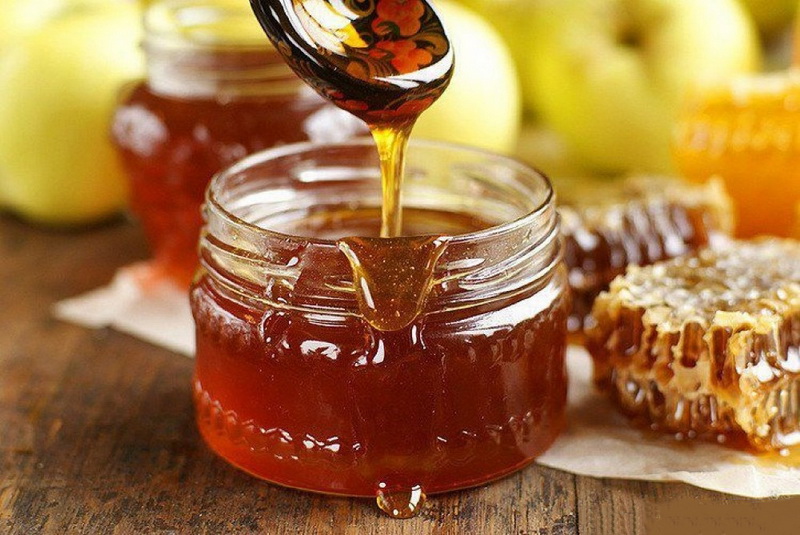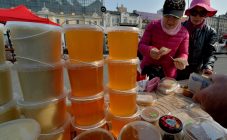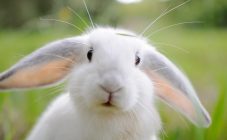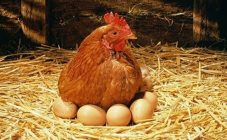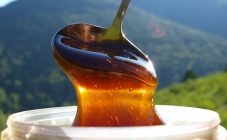Content:
Buckwheat is one of the honey-producing plants; bees are quite active in collecting nectar from white or pinkish flowers. Beekeepers responsibly prepare for the beginning of its flowering and transport the hives closer to the plantings. From 1 hectare, you can get up to 80 kg of the most valuable honey. Buckwheat is successfully grown in the central regions of Russia, in the south, as well as in Bashkiria and Altai.
How to check buckwheat honey for naturalness
When buying honey (a very popular beekeeping product), you need to require a certificate of conformity, especially if it is purchased from hands or in places not intended for such trade.
Despite the high content of various microelements and other substances useful to humans, there is still a chance to independently determine whether this composition is a fake. There is a way that sometimes helps - using a special chemical pencil that reacts with water and takes on a dark blue or purple color. Therefore, the presence of H2O in the product is easily determined.
Differences between real buckwheat honey and fake
If you bought buckwheat honey, how to determine its naturalness yourself? A small jar is enough to sort it out and check the authenticity.
To objectively assess what kind of substance is in front of you, you should do several experiments. Here are some homemade methods to help customers find the best option:
- Immerse a piece of bread in the mass and wait about 10 minutes. Then remove and inspect. If the bread has lost its shape and softened, it means that this is an ordinary thickened syrup, since in a real product this piece will surely harden.
- Dissolve 1 teaspoon of buckwheat honey in half a glass of warm distilled water. A quality product will dissolve completely, without residue. If something is mixed in it, then the resulting mixture will be heterogeneous. To verify this, add a little ethyl alcohol - the liquid will become cloudy, unlike a real solution, which will still be transparent. The reaction of natural honeydew honey from coniferous trees can be considered as an exception.
- Add a few drops of pharmacy iodine tincture to the same solution of honey and water. With its help, you can easily determine the presence of starch - the liquid will acquire a bluish tint.
- The presence of chalk in the composition is easy to recognize with the help of table vinegar. Then a few drops of it will provoke the appearance of bubbles.
- Starch must be poured onto the layer of the sweet substance under study. A fake will definitely show itself - a reaction will occur, real honey will remain neutral.
Home screening methods may not always accurately show whether honey is natural or not. It is difficult for an inexperienced person to find real honey; it is better to buy it in large specialized stores or outlets at local beekeeping societies.
What buckwheat honey
A low-quality fake can be acquired by a person unfamiliar with the aroma and taste of real buckwheat honey. It is imperative to take into account its consistency and transparency, which can change over time. The most interesting thing is that at first glance, an inexperienced buyer, additives can improve the taste of the product, but they will worsen the quality, unique properties and adversely affect human health. When buying buckwheat honey, how to determine if it is a fake? Quite simply - you need to know how it should be and how it should look.
Sometimes you have to choose buckwheat honey from other quality products. In order not to confuse them, you need to know the taste, smell, color of other valuable varieties. A fake is easily identified, one has only to identify, independently or in laboratory conditions, the presence of substances that should not be in a natural product. This can be sugar syrup, dissolved chalk, citric acid and other ingredients that can affect the taste, as well as some chemicals that affect the color.
Colour
The buckwheat variety is dark brown or reddish in color. It may even be brown, it depends on whether the bees collected nectar from one (it is extremely rare) or several crops. This is its most important difference from the equally popular lime tree, light, with a pronounced amber tint. It often happens that minor inclusions of nectar obtained by bees from other plants blooming around buckwheat fields can slightly change its basic color.
Taste
Honey has a pleasant, usually sweet, even tart taste, sometimes gives a slight burning or sore throat. This is how its antibacterial properties are manifested, associated with the characteristics of the buckwheat plant, whose flowers have always been widely used in folk medicine.
The buckwheat variety is characterized by very fast crystallization. How to tell if something is wrong with honey? 3 months after harvesting, a kind of white "scale" appears on it - a layer of sweet crystals, meaning that this product is natural, it quickly begins to thicken and is candied in winter, sometimes earlier, in November.
Scent
The aroma of such honey cannot be confused with any other variety. First of all, it is a recognizable honey aroma: honey smells like buckwheat, or rather its flowers. For those who are not familiar with their smell, it will be enough to focus on the well-known buckwheat porridge.
How to recognize a fake
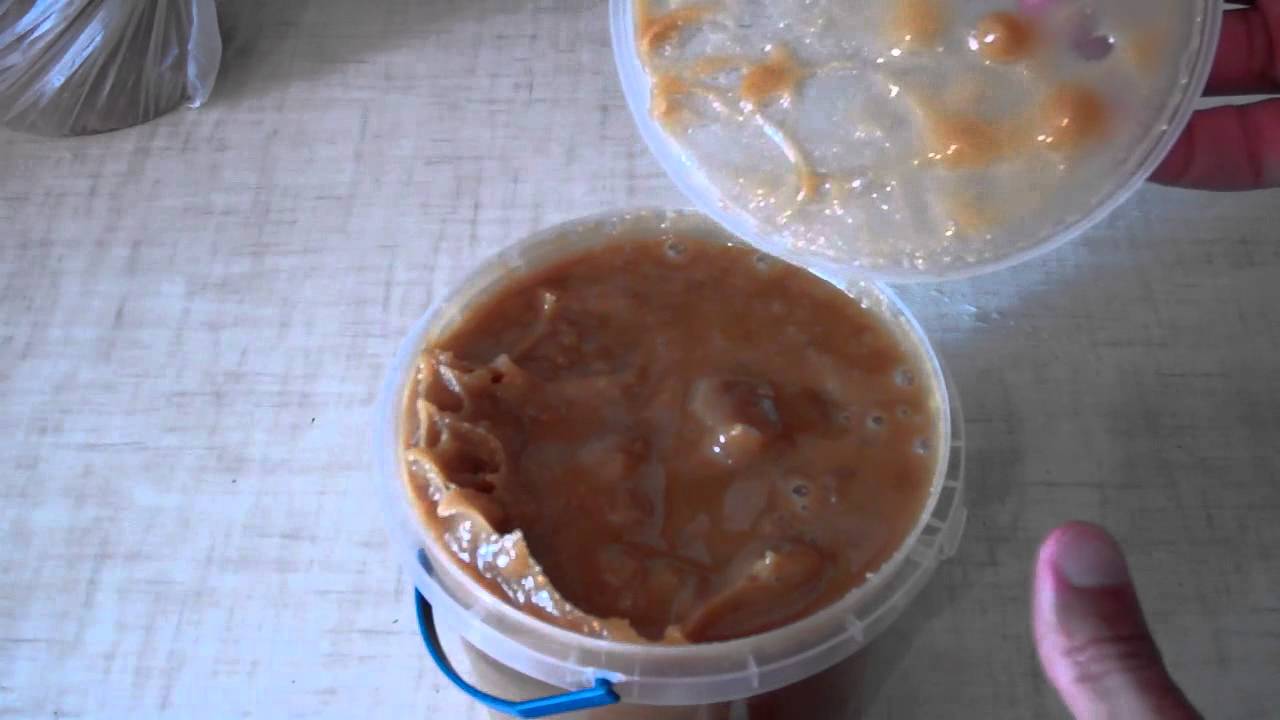
In winter, the consistency of buckwheat varieties, in contrast to linden or acacia flowers, should be thick
Special laboratories are engaged in determining the naturalness of honey. In their arsenal there are various scientific methods, research is carried out on modern equipment and makes it possible to study the provided sample by 20 parameters. The substance can even be checked for the presence of drug residues in it, with which the beekeeper could treat diseased bees. It is impossible to find out on your own.
Even a natural treat, without additives, can be of poor quality. This happens if the substance is immature, that is, it does not have properties useful to humans, and quickly begins to ferment and release gas.
When stored properly, natural buckwheat honey is a real storehouse of vitamins.It is easy to sugarcoat if placed in a clean, dry and cool room for several months. Any odors should be excluded. The container used must be equipped with a tight-fitting lid.
